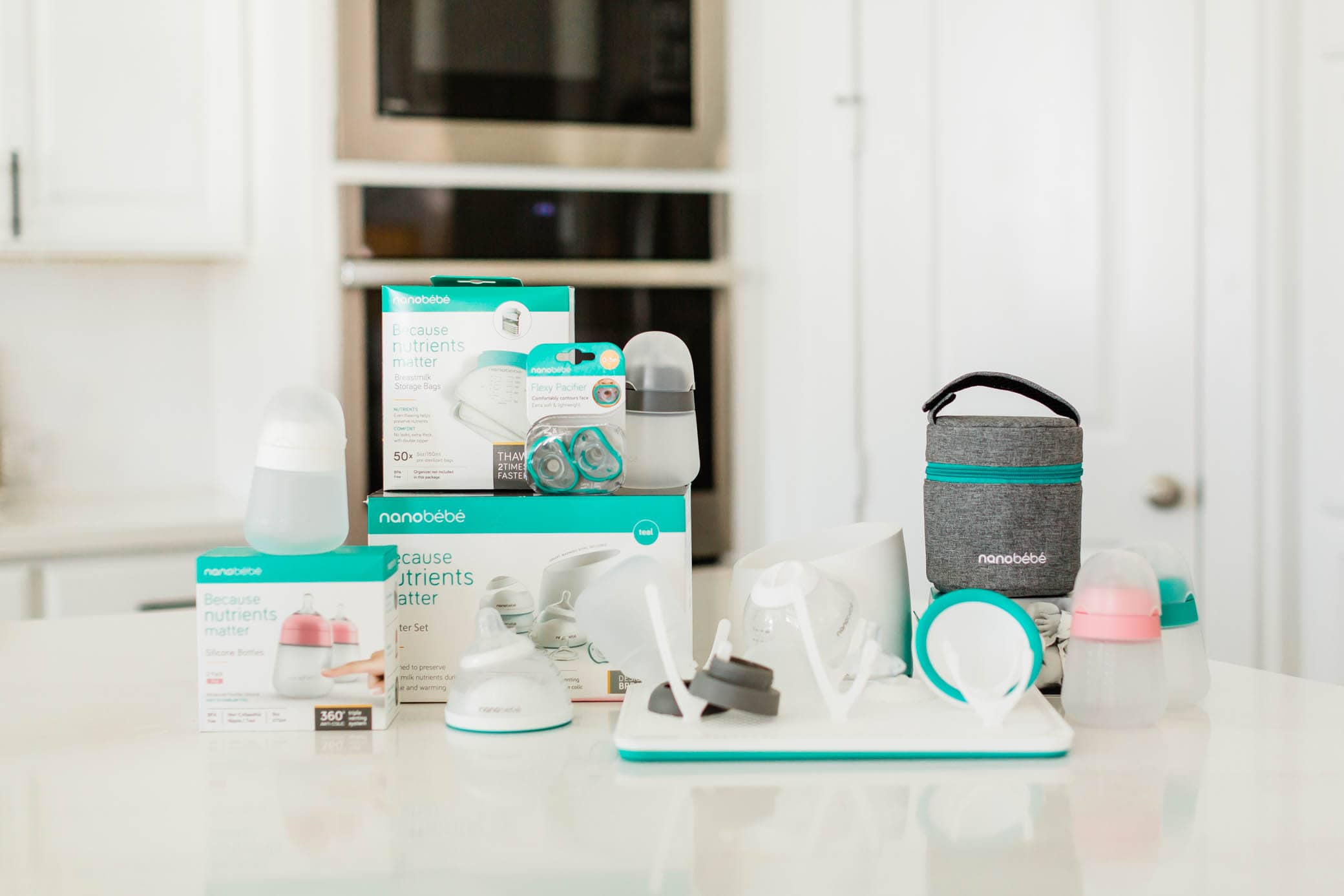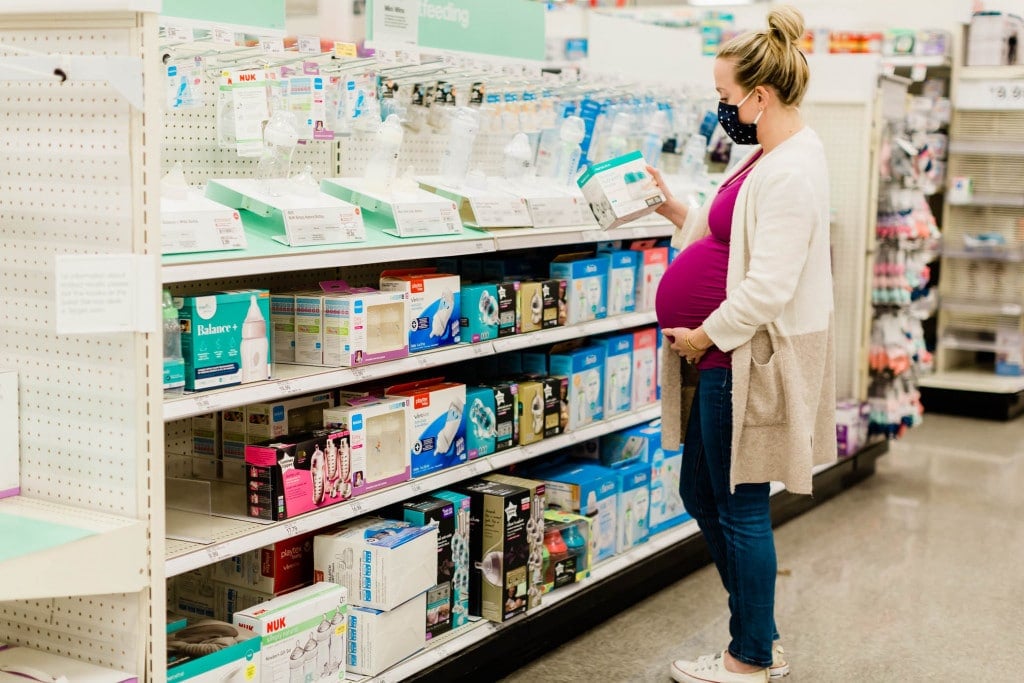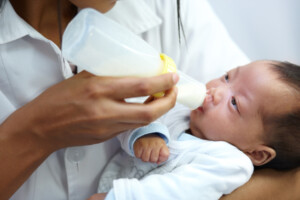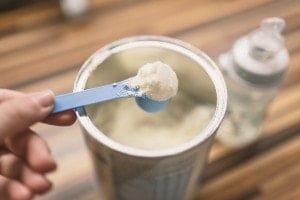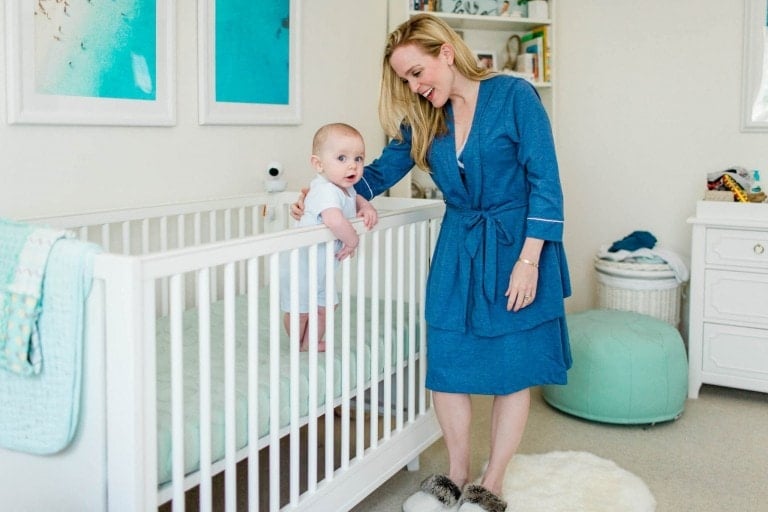What’s one of the things that you will need when you have a baby? Baby bottles. Even if you plan on exclusively breastfeeding your little one, there might come a time when you want to step away for a bit and have your partner help with a feeding. Baby bottles are a necessity when planning your baby registry. But with so many bottles on the market and with babies having different preferences, how do you know that you’re choosing the right bottles? There are several things that you need to consider. So, before you scour the internet or the baby bottle aisle at your local store, plan ahead, and know what to look for before making your purchase. This list will help you pick at least one or two good baby bottles before your baby’s arrival. Then, once your baby arrives, he can choose which one(s) he likes best.
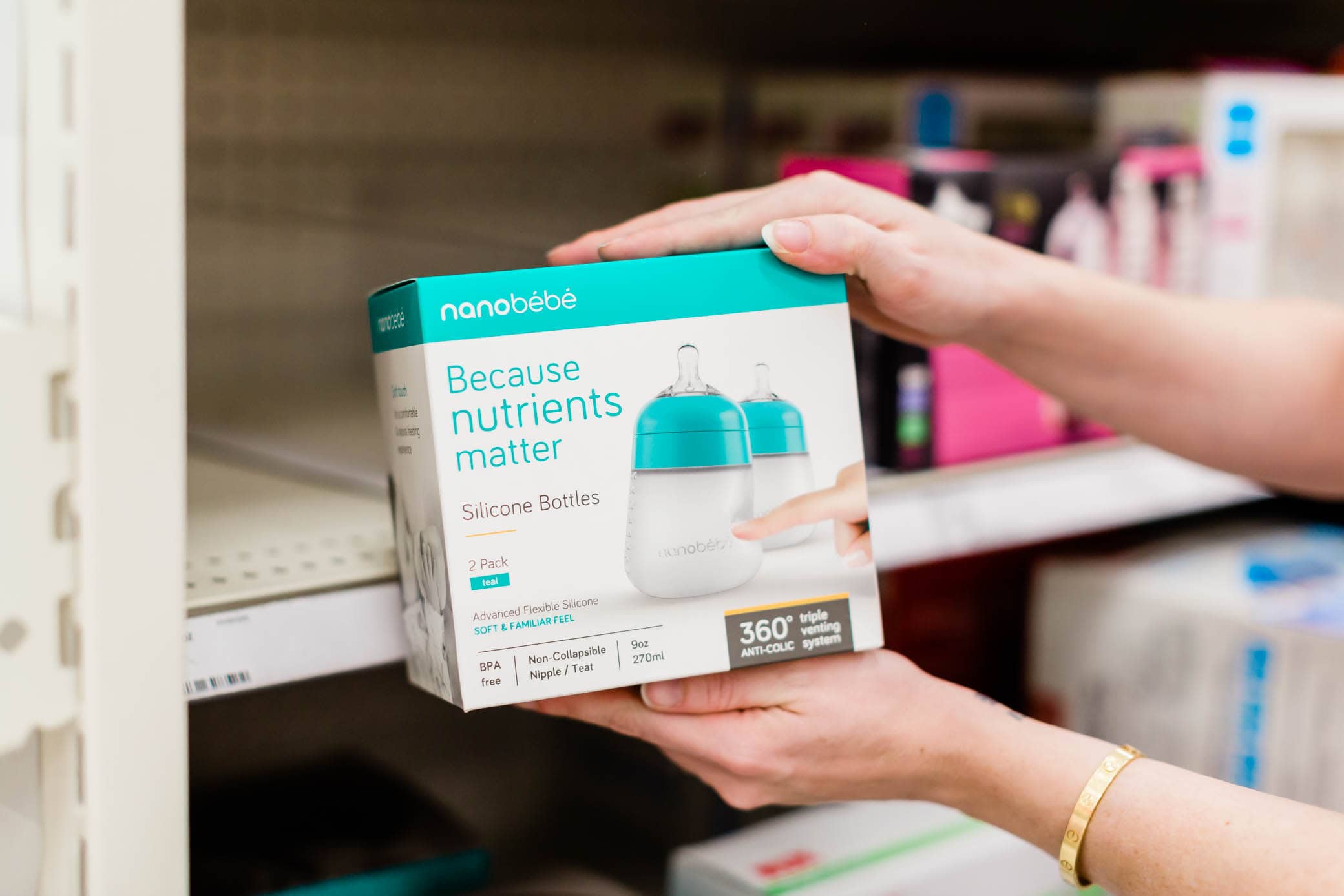
How to Pick a Baby Bottle for Your Baby
Here are eight things to consider before purchasing baby bottles for your baby.
1. Bottle Material
Baby bottles are made of different materials: plastic, silicone, glass, and stainless steel. While looking at the different options, ensure that the brand and bottles you choose are safe and free from potentially harmful materials and toxic chemicals. For example, free from BPA (bisphenol A), phthalates, lead, and PVC.
Plastic Bottles
You’ll find that many baby bottles are made of plastic. Plastic bottles are good options. They are inexpensive and convenient for parents because they’re lightweight and won’t break. However, they will need to be replaced over time, especially if you plan on using the bottles regularly for feedings. When should they be replaced? Look for leaks, cracks, scratches, discoloration, a cloudy look, and check for bad odors.
A great option is the Breastmilk bottle from Nanobébé. It’s baby-safe, non-toxic, and has a great number of benefits for parents and baby! We love that this bottle resembles the shape of mom. (Read our full review of the Breastmilk bottle from Nanobébé.)
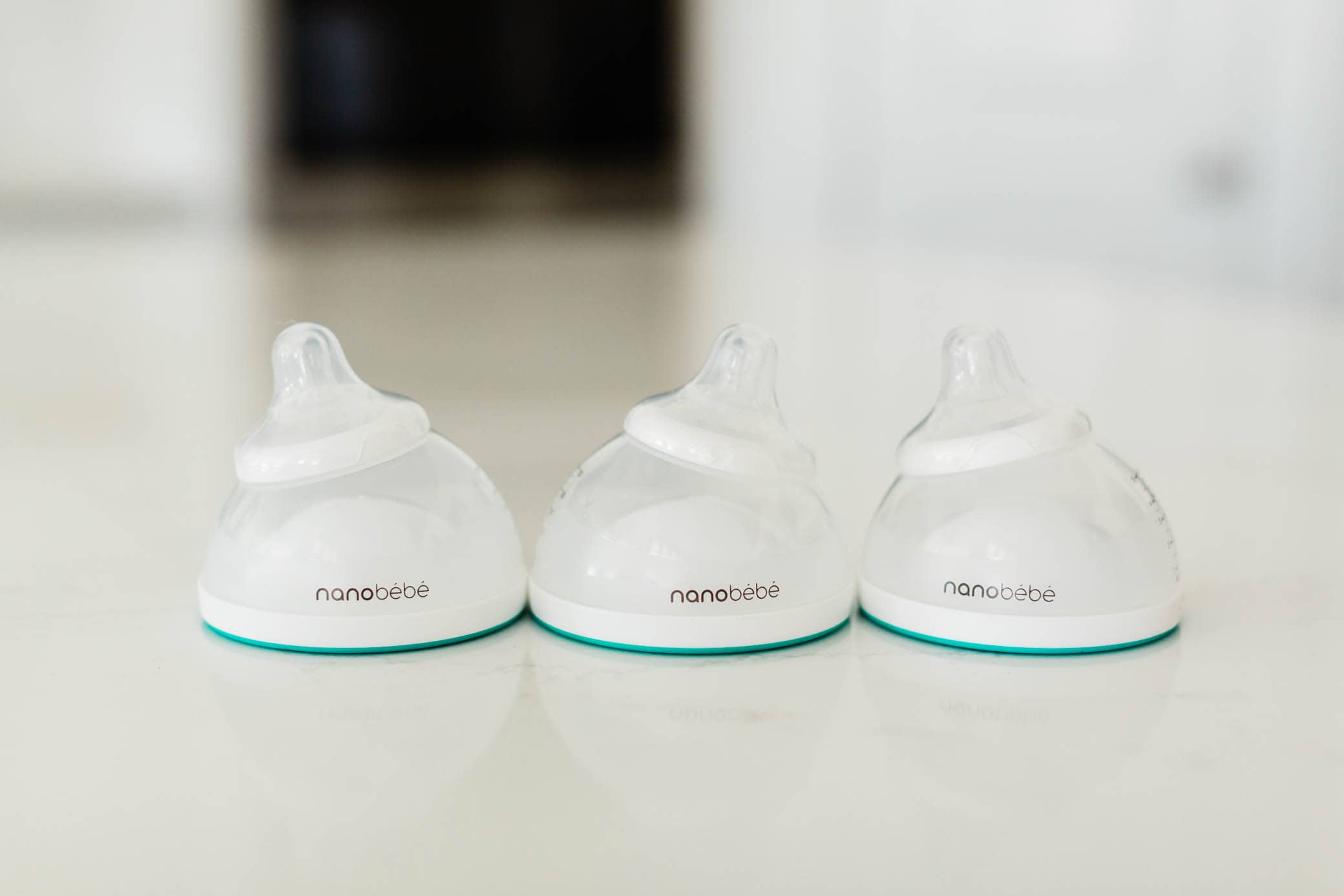
Glass Bottles
Glass bottles give parents peace of mind because glass is naturally free of toxic chemicals, made of natural materials, and dishwasher safe. They pick up fewer scratches than plastic bottles and can withstand high temperatures when washing or boiling to sanitize. Glass can also handle quick temperature changes, like being heated straight from the fridge. Another plus is that glass won’t seep contaminants into the breastmilk or formula inside. And parents like that glass bottles rarely ever need to be replaced — unless they break — and will last for years to come.
Even though glass baby bottles are durable and sturdy, they are heavy and breakable. They can also get slippery when cleaning. To fix this, you can purchase protective silicone sleeves for a better grip and protection from breaking.
Silicone Bottles
These bottles have become popular because of how lightweight they are, that they are not breakable, and because they are flexible and feel more “natural.” They are made from food-grade silicone and are BPA-free. Silicone bottles are a happy medium between glass bottles and plastic bottles. They’re not as sterile, heavy, or breakable as glass; however, they are not as porous and prone to stains as plastic. If you are looking for a more affordable price tag than glass baby bottles but still want the safety features, like being naturally non-toxic, silicone bottles are a great option for you!
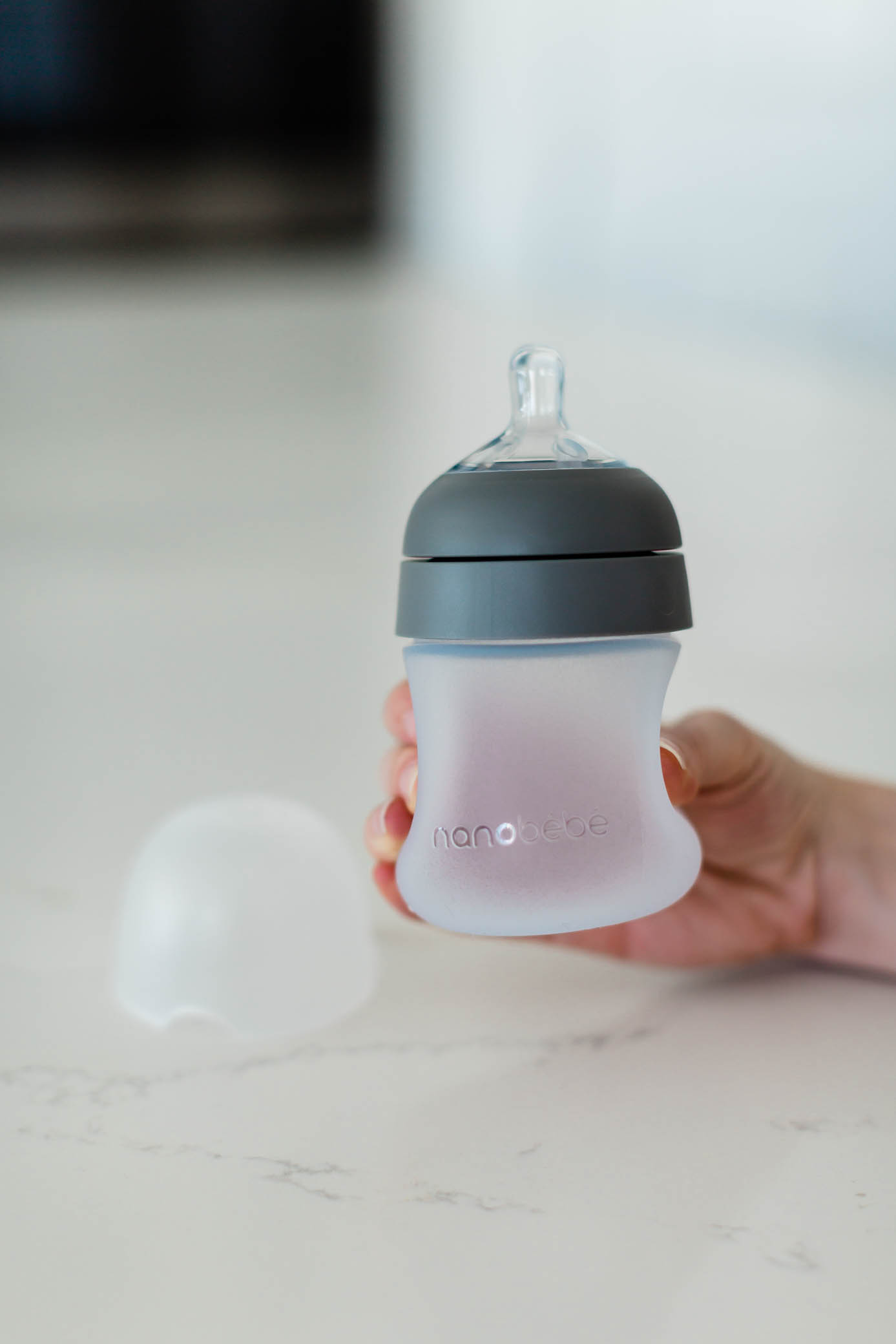
When choosing a silicone bottle, something to look out for is choosing one with a wide base. The last thing you want is your breastmilk or formula to tip over and spill after being prepared. This is one of the many reasons why I recommend the Flexy bottle from Nanobebe if you are looking for a good silicone baby bottle. The stable, non-tipping base prevents spills from happening.
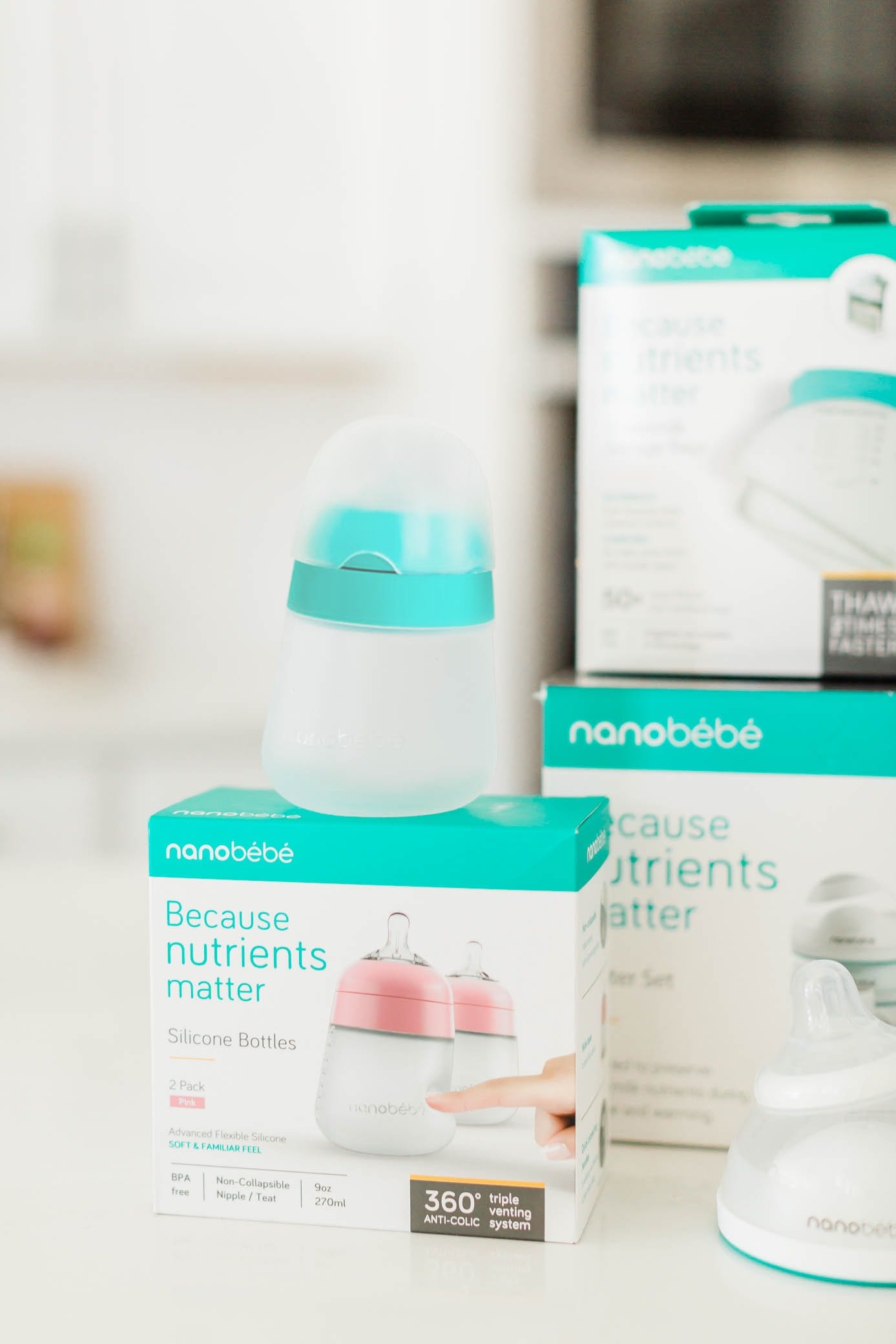
Stainless Steel Bottles
These bottles are non-toxic, lightweight, durable, they don’t break like glass bottles, they last for a really long time, and they don’t leach chemicals into your baby’s food. However, they are more expensive. They’re even more expensive than glass baby bottles. Another thing that turns parents off is that you can’t see how much milk or formula is in the stainless steel baby bottle from the outside. This makes measuring and preparing the bottle more of a hassle. These are just some things to consider before purchasing stainless steel baby bottles.
Disposable Plastic Liners
Some baby bottles use disposable plastic liners. Parents do like that they warm up faster, that there is less time cleaning, and they collapse and create an air-free feeding, which reduces air consumption. While these liners are super convenient, they become more costly and are not eco-friendly since they can only be used once. Some of the other dislikes: it can be difficult to read when measuring the liquid amount, the liners are prone to punctures and can create a big mess, and if you run out of liners, you will need to go out and purchase more or use a different type of bottle.
2. Bottle Shape
When looking at baby bottles, you’ll notice that they come in several shapes.
Standard – The tall, narrow, and straight baby bottles.
Wide – The shorter and wide baby bottles. These are also designed with short and wide nipples to mimic the breast. Wide bottles are easier to clean and can be easier for your baby to hold earlier.
Angled – These bottles are bent at the neck, so milk collects at the bottom of the bottle. This may prevent your baby from swallowing air. The downside to this shape is that it may be more difficult to clean.
Breast – The innovative Nanobébé Breastmilk baby bottle is designed in the shape of a breast, which encourages smooth transitions between breast and bottle. This unique design allows the bottles and their contents to cool quickly, reducing bacterial growth and warm quickly and evenly, which prevents nutrient-damaging temperatures and hot spots. This means baby is fed safely and promptly. It also warms two times faster than other bottles, is stackable (with included storage caps) to save space, and is easy to clean and assemble.
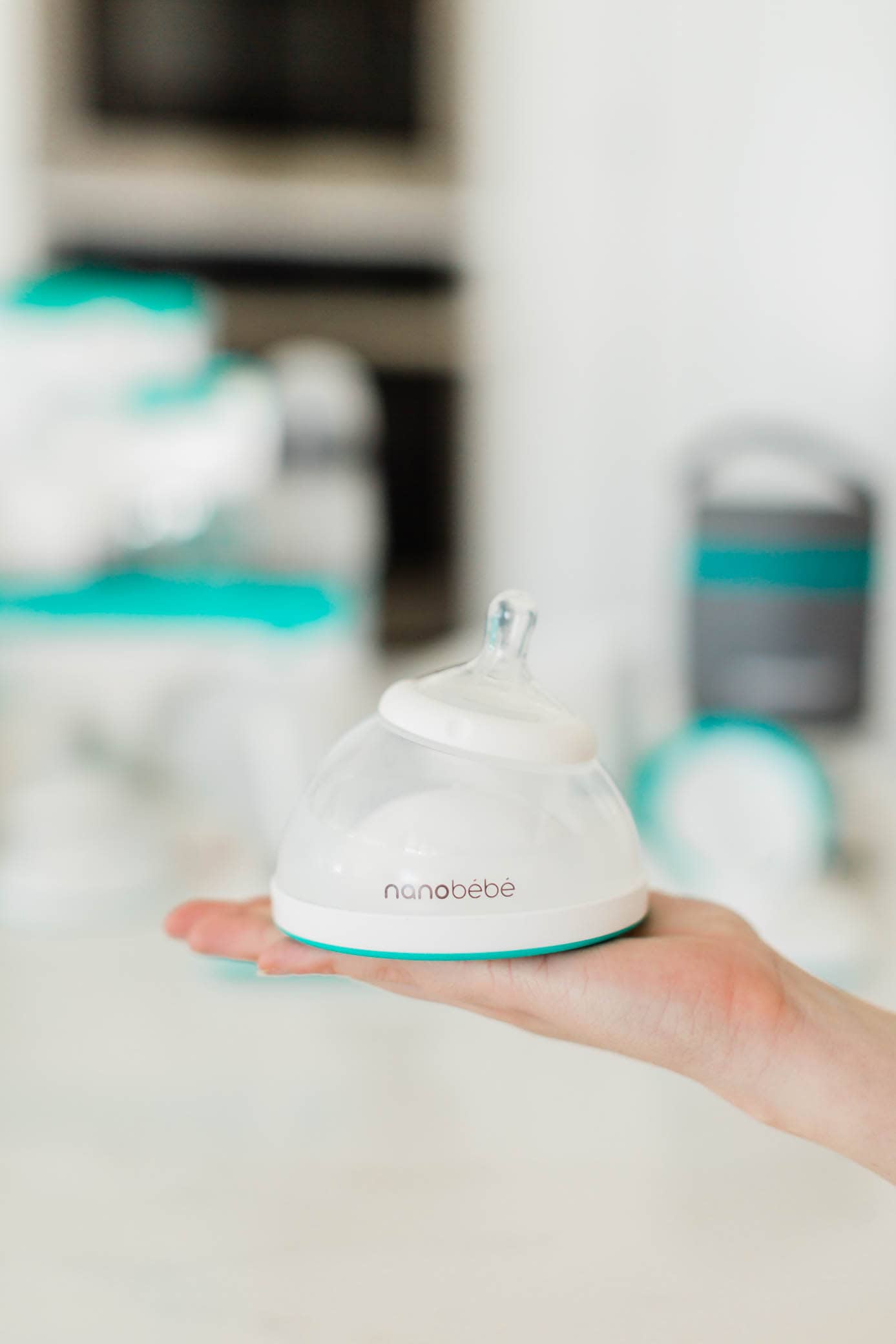
3. Bottle Size
When it comes to size, baby bottles come in small (around 4-5 ounces) and large (around 8-9 ounces) sizes. The small sizes are convenient during the first few months with baby when they are drinking between 2-4 ounces per feed. But as babies grow, they will eat more per feeding, requiring you to purchase larger bottles.
Will it grow with my baby?
Before you buy, ask yourself if you want a baby bottle to grow with your baby. If so, to save some money, you can skip the small bottles and go straight to the large bottles. It’s unnecessary to fill the bottles completely at the beginning. However, keep in mind that some larger bottles come with a faster flowing nipple. Thus, check on the nipple level that comes with your bottles before you purchase, especially if you plan on using the larger bottles with your newborn.
I really like that the Flexy silicone baby bottles can truly grow with your baby. Their small, compact design holds up to 9 oz., and you can use their quick snap Flexy Bottle Handles for when your little one has developed their fine motor skills.
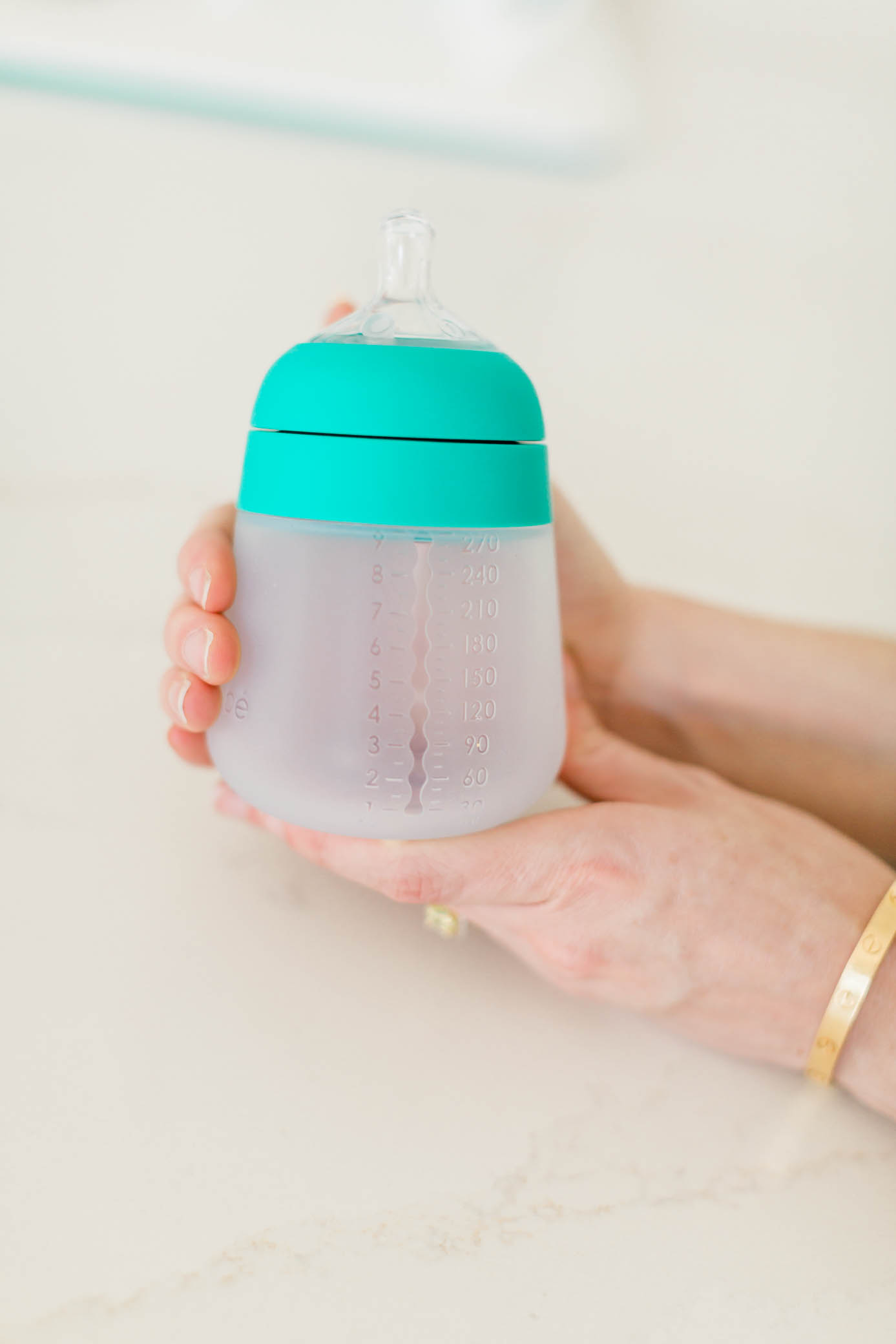
4. Nipple Material
In general, bottle nipples are made of latex, silicone, or you can find some that are made of natural rubber.
Latex – Latex nipples are softer, inexpensive, and more flexible than silicone nipples. However, they’re not as durable and do wear out faster. They also may leach carcinogens called nitrosamines, which is scary. Another thing to be mindful of is some babies are allergic to latex.
Silicone – Silicone nipples are made from food-grade or medical-grade silicone. They are firmer than latex nipples but are more durable, which means they last a lot longer. They are also toxin-free!
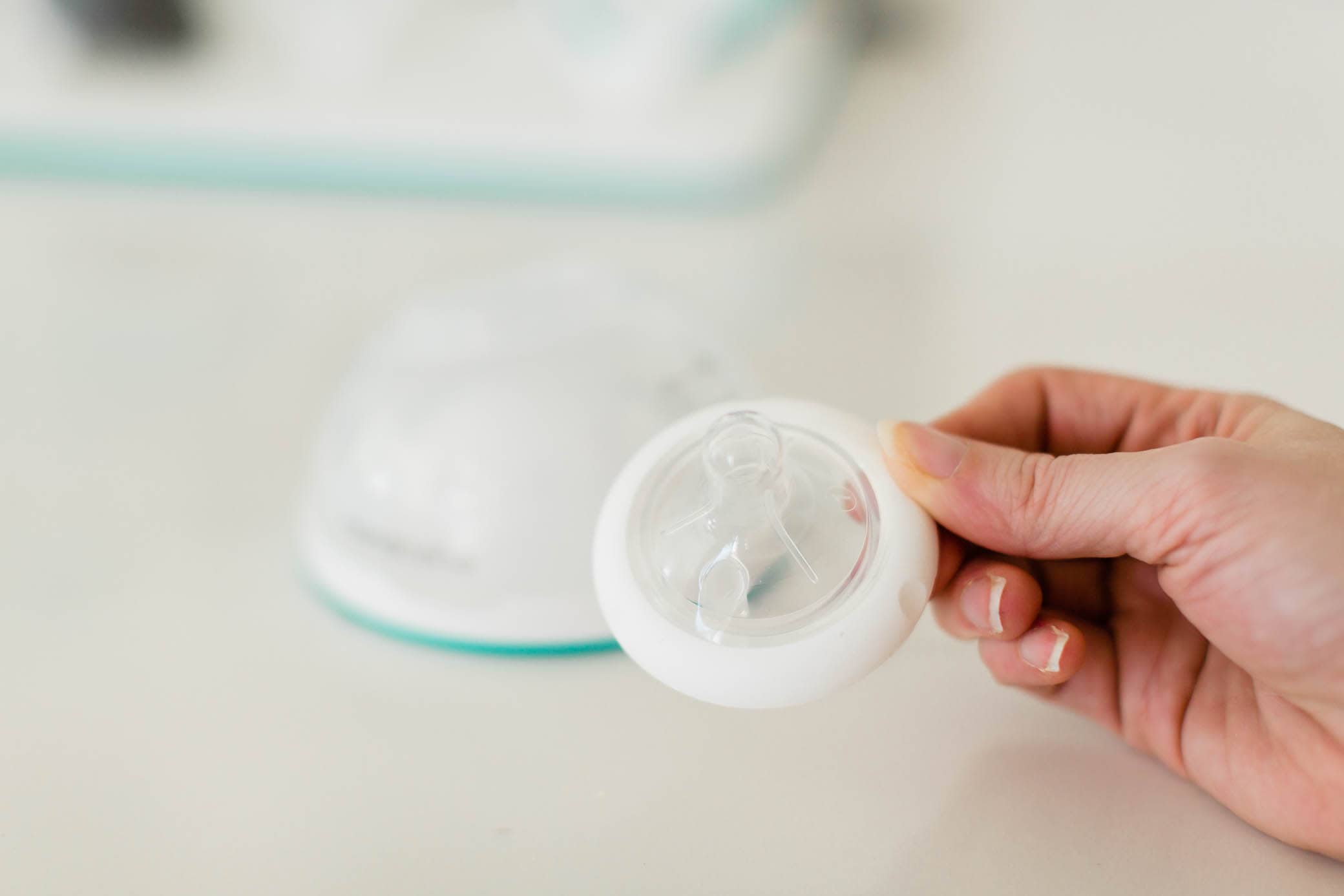
Natural Rubber – Natural rubber nipples are also non-toxic, soft, and flexible.
No matter which nipples you purchase, they will need to be replaced over time. What should you be on the lookout for? Look for cracks, tears, thinning, discoloration, if they become sticky, and if the flow is flowing faster than it was originally when you purchased it.
5. Nipple Shapes
Most nipples shapes fall into one of three categories:
Traditional – Long and skinny nipples.
Wide – Short and wide nipples that are made to resemble the shape of a breast. Breastfed babies may more easily accept these nipples.
Orthodontic – These are designed to fit the shape of your baby’s palate and gums, promoting healthy oral development and digestion. The nipples look to be flat on one side, which is said to mimic sucking on a human breast.
Breastfeeding or Not?
A question that you need to ask yourself is, do you plan on breastfeeding your baby or not? This can play a big factor when choosing the shape of your baby’s bottles and nipples. Ideally, if you plan on breastfeeding, you want to choose a bottle and nipple shape that resembles the breast. This includes the flow not being too fast, which brings me to my next point.
6. Nipple Levels
Baby bottle nipples come in three different levels: Level 1 (slow), Level 2 (medium), and Level 3 (fast). Some bottles even offer a preemie nipple. The level corresponds with the different flow speeds, meaning how quickly your baby can get the milk out of the bottle. Typically, healthy newborn babies start with a slow flow, which is a Level 1 nipple, and they work their way up as they grow and can handle a faster flow.
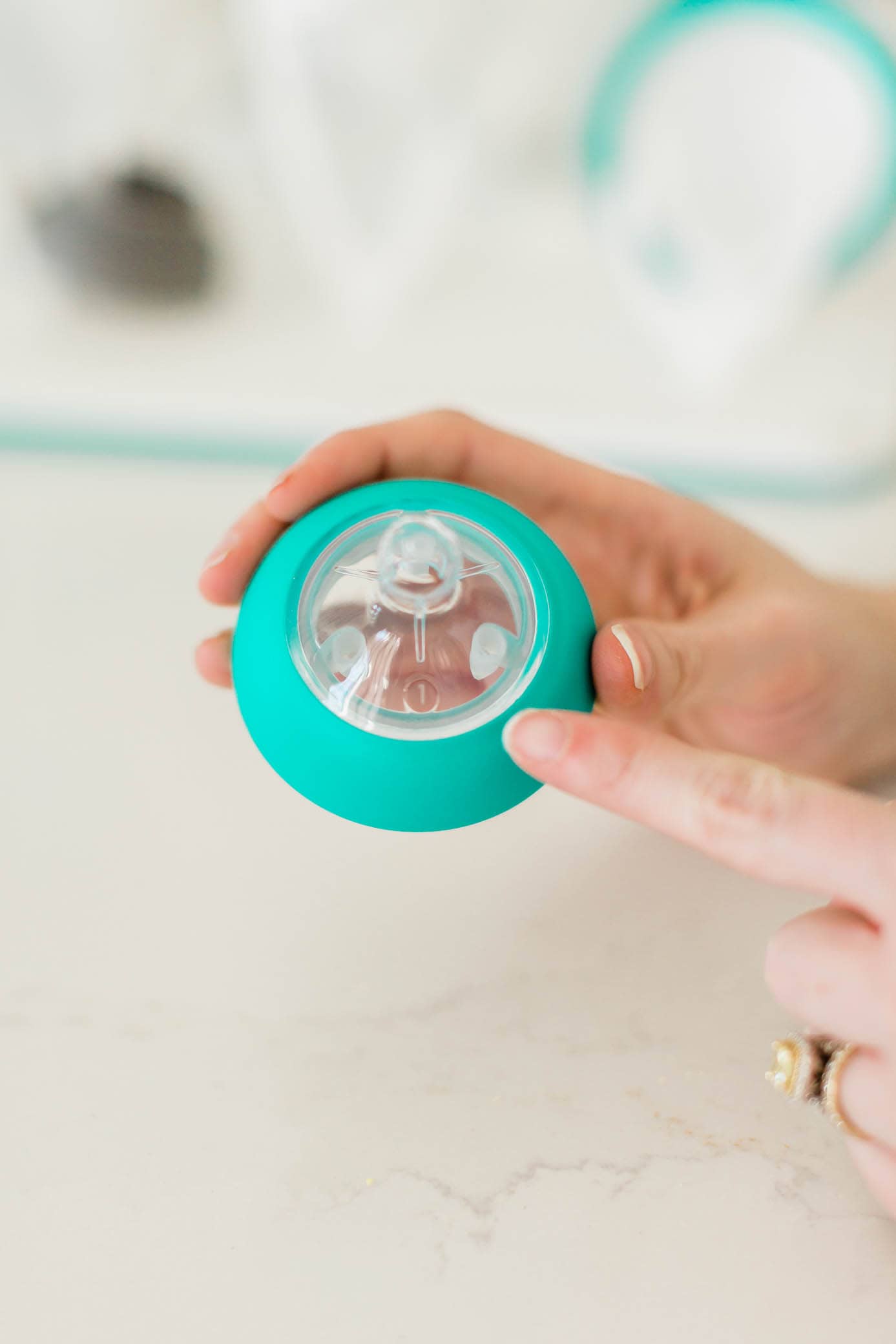
It’s vital to have the correct level nipple for your baby, especially if you plan on breastfeeding and bottle-feeding your baby. If you plan to do both, it’s recommended to go with the slower flow. A slower flow mimics the “work” they have to do when feeding at the breast. You don’t want it to be too easy to get the milk out of the bottle because it helps your baby not overeat or vomit. It also helps them maintain their sucking strength for breastfeeding. And if it’s too easy to get the milk out, your baby may ultimately prefer the bottle and refuse the breast since it’s less work for them to eat.
A good indication that your nipple level is too big and fast-flowing is if your baby chokes or sputters during the feeding session. If you notice this, go back down a size. And, of course, replace the nipples when your baby is ready for the size up or if the nipples are cracked or showing signs of aging.
7. Venting
A great feature that some bottles and/or nipples have is special venting, which can help reduce colic, gassiness, and fussiness in babies. Sometimes vented bottles require additional parts, which means additional things to wash, sanitize, and assemble, and sometimes you can find the venting on the bottle or nipple. These vents help limit the amount of air that babies swallow, reducing gas and spit-up.
I love that the Nanobébé bottles have advanced anti-colic systems with no extra parts necessary, that help with no post-feeding fussiness, gassiness, or discomfort.
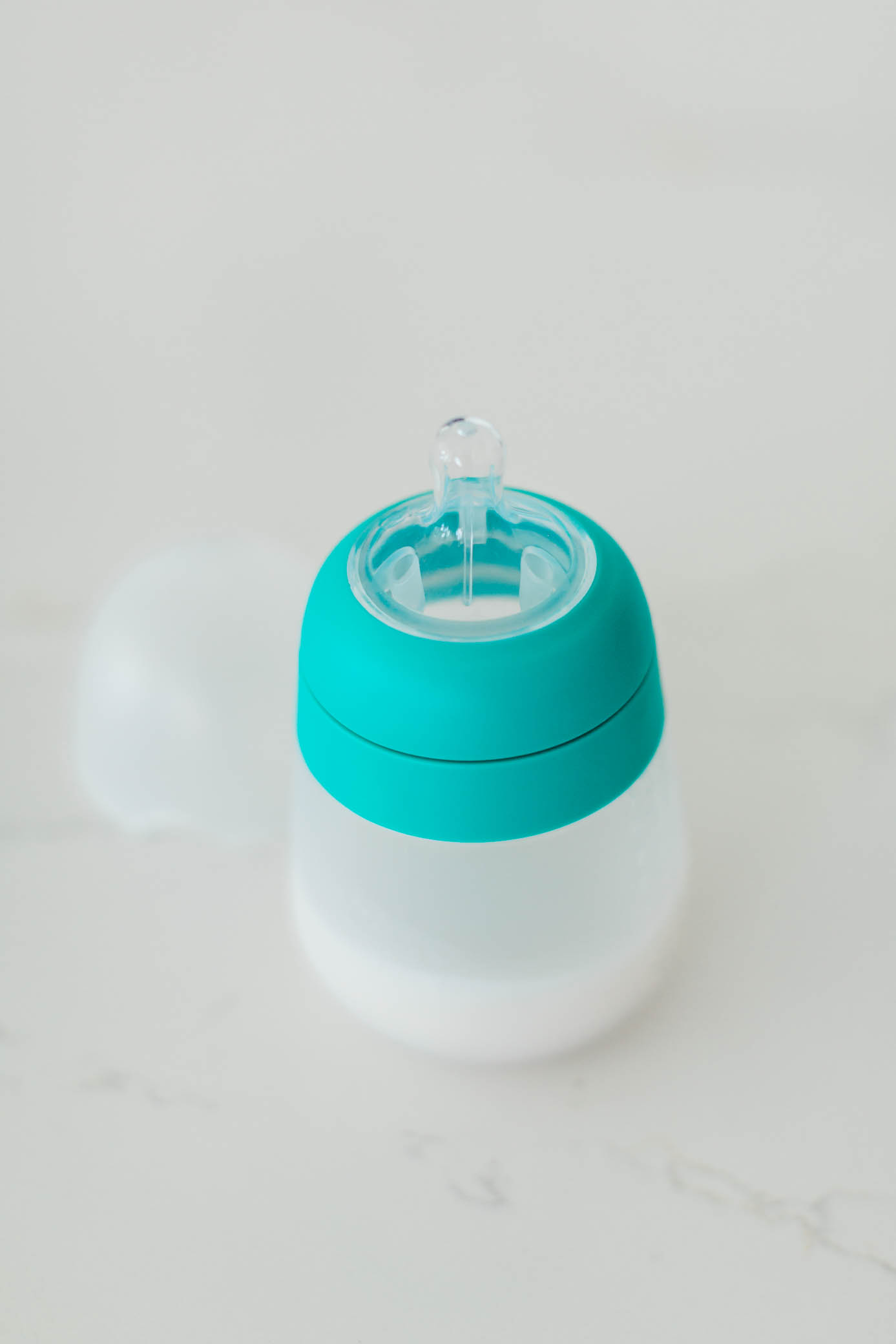
8. Bottle Conveniences
There are also a few conveniences that some bottles offer that might help you with your baby bottle purchasing decision.
Ease of Cleaning
If you plan on exclusively bottle-feeding your baby breastmilk or formula, you will be washing a lot of bottles. This is one of the least favorite parenting chores, so think about how many parts the bottle has. Also, think about whether you need a bottle brush to clean the bottles and how easy each piece is to clean.
Storage
You’ll need several baby bottles on hand, so you aren’t constantly washing only a few over and over all the time. Because you need a good amount of bottles, they can take up a decent amount of storage space. Think about the size and shape of the bottles when it comes to storing them. The Nanobébé Breastmilk bottles are one of the most convenient when it comes to storage. They can be stacked one on top of another, leaving you much more room for other items.
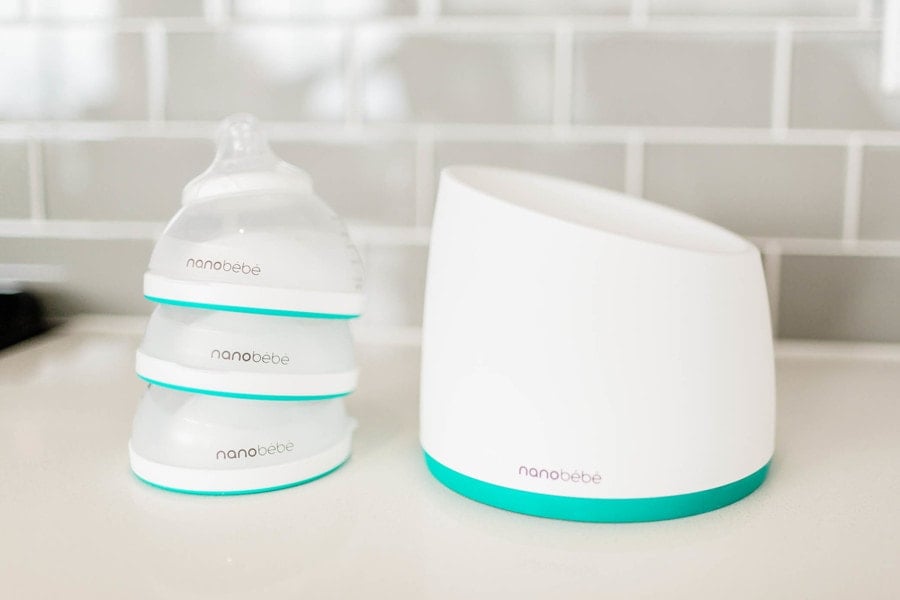
Pumping Compatibility
If pumping is a part of your routine, you may find it appealing to pump directly into your baby’s bottles. Some bottles can attach directly to your pump, and some come with adapters so that you can catch your milk straight into the bottle. It makes it extremely convenient to store in the fridge and put a nipple on it when your baby is ready to eat, especially if you are pumping regularly.
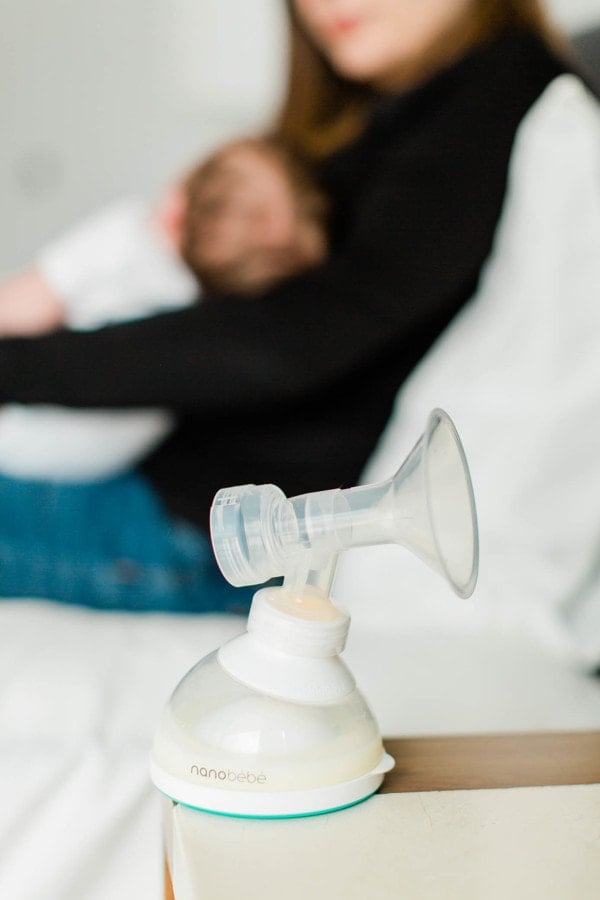
By considering these eight points before you start buying baby bottles for your baby, we know this will limit your trial and error time testing baby bottles and will ultimately save you time, money, and your sanity. Cheers to finding the baby bottle of your and your baby’s dreams!
